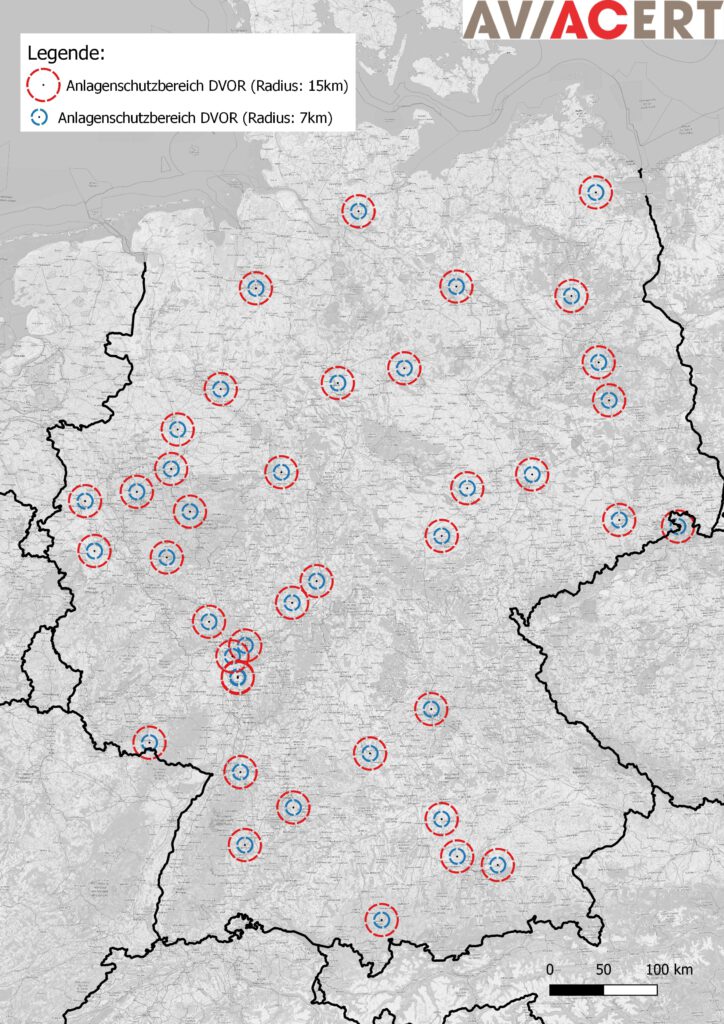According to the German government, the generation of electricity from renewable energies is to be doubled by 2030. To achieve this, the expansion of wind and solar energy must grow three times faster than before. This is an ambitious goal, in which wind turbines in particular play an important role - but expansion is stalling. So-called rotating radio beacons (VOR) for air traffic represent a major obstacle with regard to wind power expansion. These beacons emit electromagnetic waves that can be used to determine an aircraft's position and heading. But wind turbines can affect the propagation by deflecting these waves, thus impairing the functionality of the rotating beacons. Therefore, so-called plant protection areas (§ 18a LuftVG) have been defined to protect radar and radio navigation systems. Wind turbines may only be erected in these areas with the approval of the Federal Supervisory Office for Air Traffic Control (BAF), which decides on the basis of an opinion from German Air Traffic Control (DFS).
Compared to other countries, such system protection areas are defined as large in Germany (radius of 15 km around the beacon). In this context, the Physikalisch-Technische Bundesanstalt (PTB) came to the conclusion that the system protection areas of certain radio beacons (Doppler rotating beacons, DVORs) could also be reduced to 7 km. In December 2022, DFS confirmed the reduction of the protected area for 36 such DVOR radio beacons to a radius of 7 km following an operational review. In terms of area, this reduces the system protection area by around 75%. The extent of the potential space gain for new wind turbines in Germany is illustrated in the following figure:

In addition to the reduction of the plant protection area of DVOR rotating radio beacons, other measures to improve the compatibility of wind turbines and the operation of rotating radio beacons have been implemented or adopted:
- By 2025, eight modern rotating beacons will replace older rotating beacons that are susceptible to interference.
- By 2030, 19 of the current 52 rotary radio beacons are to be dismantled.
- As of August 1, 2022, the allowable interference (technically, "angular error") has been increased from 3° to 3.6° and the error budget available for external interference has been increased by 0.5 ° to 1.1°, which will significantly increase the approvability of wind projects within turbine protection areas, most of which are now already downsized.
- Since October 10, 2022, German Air Traffic Control (DFS) has been applying a new formula for calculating disturbances at so-called CVOR systems, which will also increase the approvability of wind projects.
Are you now wondering whether your WTG project is feasible under the changed framework conditions? Then we are exactly the right contact for your request! We prepare aeronautical expert opinions taking into account factors relevant to licensing law, such as
- Obstacle boundary surfaces
- Building protection areas
- Operational procedures (visual and instrument flight)
- Air traffic control operational and technical factors
- Estimation of maximum realizable total heights of the wind turbines
With our detailed expert opinion, we thus provide a basis for decision-making for all parties to be involved.
Feel free to contact us with your location coordinates to obtain a quote at bnk@aviacert.de
